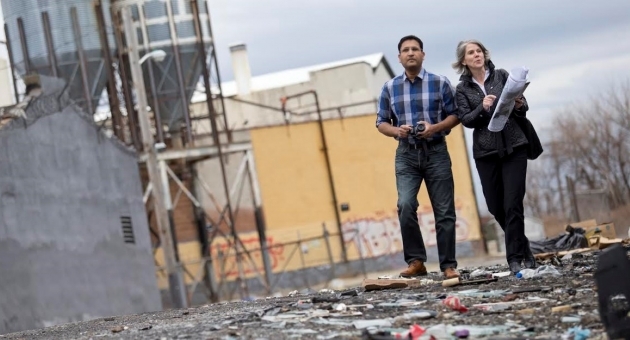Temple receives EPA grant to clean up industrial contamination

Funding from the U.S. Environmental Protection Agency to Temple University will help plan health, environmental and economic improvements in Philadelphia’s Kensington neighborhood.
The $200,000 grant will target the cleanup and reuse of “brownfield” properties, former industrial sites where redevelopment is hampered by environmental contamination.
“Temple is the first university to receive an EPA Brownfields Area-Wide planning grant,” said EPA Regional Administrator Shawn M. Garvin. “This funding to Temple underscores the university’s environmental leadership and commitment to improving the health and future of its neighboring communities.”
Temple University’s Center for Sustainable Communities will collaborate with the New Kensington Community Development Corporation (NKCDC) and community and city leaders to plan and design future uses of brownfields adjacent to the Lehigh Viaduct, a freight rail corridor located along Lehigh Avenue. The primary focus will be between Kensington Avenue and Tulip Street.
“The industrial legacy of this area of the city has created numerous environmental justice, social and public health concerns for this neighborhood,” said Mahbubur Meenar, assistant director of GIS operations and research for the Center for Sustainable Communities, an adjunct faculty member in Temple’s Department of Community and Regional Planning and the project’s principal investigator.
Possible future uses for the brownfield sites include green space, walking and biking trails, and a community job training center.
“Temple strongly believes in university-community partnerships. The Center for Sustainable Communities develops such partnerships for most of our research projects,” said Jeffrey Featherstone, professor in the Department of Community and Regional Planning and Director of the Center for Sustainable Communities. “The project will include numerous community outreach and visioning exercises—participatory photo mapping, focus groups and design workshops.”
Temple's project team also includes Jeffrey Doshna, instructor of community and regional planning; Lynn Mandarano, associate professor of community and regional planning; Mary Myers of Temple’s Department of Landscape Architecture and Horticulture; Robert Fleming of Re-Vision Architecture; economists from Econsult Solutions; and community development specialists from NKCDC. The center will also collaborate with the Philadelphia City Planning Commission, Conrail, the SEPTA Police Department and local civic organizations on the project.
“Giving the community a long-range brownfields plan will provide a critical resource for future development in these neighborhoods,” said Meenar. “Through extensive community engagement and collaboration, this plan will lay out a future vision for the area, based on what the community feels it needs.”
- Jim Duffy